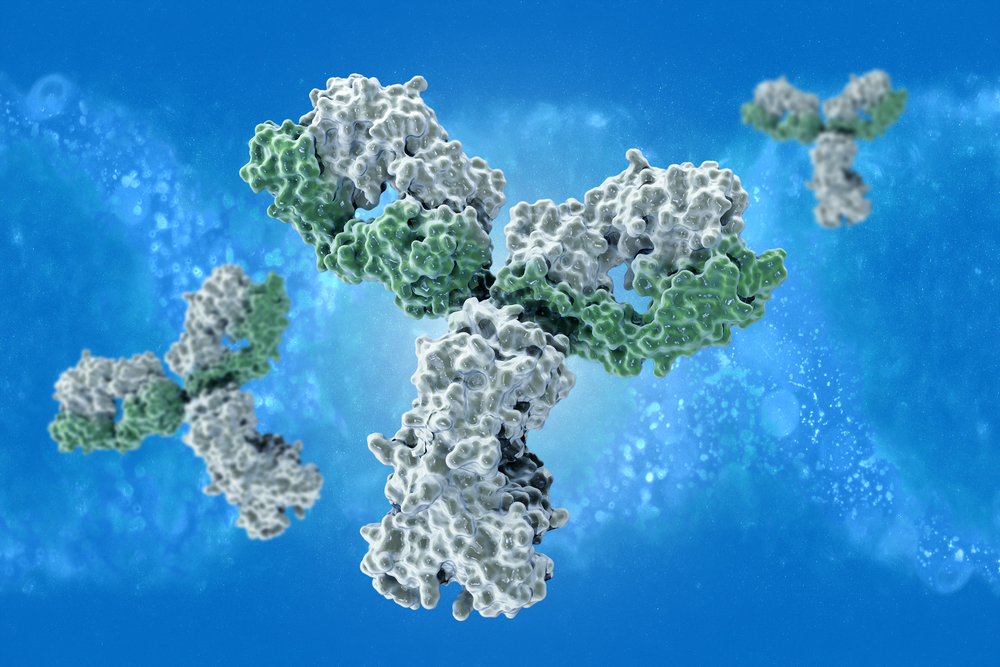RABBIT ANTI-LEPTOSPIRA POLYCLONAL ANTIBODY
Rabbit anti Leptospira polyclonal antibody has been produced for the development and manufacturing of diagnostics reagents for use in ELISA, fluorescence microscopy, immunoblotting and immunohistochemistry. Antibody can be used in place of neat antiserum in almost any appropriate antibody-based technique. It is also suitable for conjugation purposes.
PRODUCT DETAILS – RABBIT ANTI-LEPTOSPIRA POLYCLONAL ANTIBODY
- Rabbit anti Leptospira polyclonal antibody consists of purified IgG fraction.
- Immunogen was a preparation of Leptospira biflexa whole organism.
- Anti-Strep A polyclonal antibody has been purified in a multi-step procedure. ≥95% purity.
- Presented in phosphate saline buffer (0.01M, pH 7.2) containing 0.1% sodium azide preservative. No stabilizing proteins have been added.
- Reacts with all Leptospira biflexa antigens.
BACKGROUND
Leptospirosis is a widespread zoonotic disease caused by systemic infection by pathogenic spirochetes of the genus Leptospira. Leptospira spp. are thin (0.1µm diameter and 6–20µm in length), flexible, motile, spiral-shaped bacteria and are surrounded by an outer envelope or external sheath which covers the cylindrical body. Two periplasmic flagella are located at opposite ends of the cell, with the free ends overlapping in the centre of the cell. The flagella are located between the outer envelope or sheath and the protoplasmic cylinder. The cytoplasmic contents are contained within the protoplasmic cylinder. A variety of protective and genus-specific antigens are located in the outer envelope and Lipopolysaccharide material appears to be an important antigenic component (Evangelista & Coburn, 2010).
Members of the genus Leptospira are conventionally grouped into two separate species based on pathogenicity. The pathogens form the parasitic ‘interrogans’ group whereas the non-pathogens form the saprophytic ‘biflexa’ group. Further distinction of these two species is based on serology where serologically related serovars are grouped into serogroups. Both pathogenic and saprophyte Leptospira species exist in nature (Woo et al., 1997). A wide variety of different mammalian species may be infected by pathogenic leptospires, which cause only a mild chronic-to-asymptomatic infection in reservoir hosts (such as rodents). However, bacteria are then shed by the host in urine and contaminate the environment, potentially leading to an infection in humans (Leptospirosis). Humans, are considered incidental hosts and symptoms can range from a mild and self-limited illness to much more severe symptoms (Weil’s disease) including multiple organ system complications and death (Adler & de la Peña Moctezuma, 2010).
Leptospira biflexa is a free-living saprophytic spirochete present in aquatic environments and does not infect animal hosts. L. interrogans and L. biflexa are morphologically similar, but can be distinguished from each other on the basis of pathogenicity to animals, serological properties or phenotypic characteristics. Normally, L. interrogans but not L. biflexa can be isolated from a patient’s blood, urine, cerebrospinal fluid or aqueous humor. However, epidemiological studies may require samples to be taken from fresh surface water of lakes or streams where L. interrogans and L. biflexa may coexist (Woo et al., 1997).
As the initial presentation of leptospirosis may be difficult to discern from some other infectious diseases, rapid and accurate diagnosis is essential in order to prevent the progression of the more severe form of the disease, particularly in developing countries. The available diagnostic tests are not always serovar-specific, because cross-reactivity against different serovars may occur between organisms in the same serogroup. There are also currently no widely available vaccines against leptospirosis for use in humans (Evangelista & Coburn, 2010).
REFERENCES
- Adler B, de la Peña Moctezuma A. (2010). Leptospira and leptospirosis. Vet Microbiol. 140(3-4):287-96.
- Evangelista, K. V., & Coburn, J. (2010). Leptospira as an emerging pathogen: a review of its biology, pathogenesis and host immune responses. Future microbiology, 5(9), 1413–1425.
- Picardeau et al. (2008). Genome Sequence of the Saprophyte Leptospira biflexa Provides Insights into the Evolution of Leptospira and the Pathogenesis of Leptospirosis. PLOS ONE 3(2): e1607.
- Woo et al. (1997). Rapid distinction between Leptospira interrogans and Leptospira biflexa by PCR amplification of 23S ribosomal DNA. FEMS Microbiology Letters, Volume 150, Issue 1, Pages 9–18.

